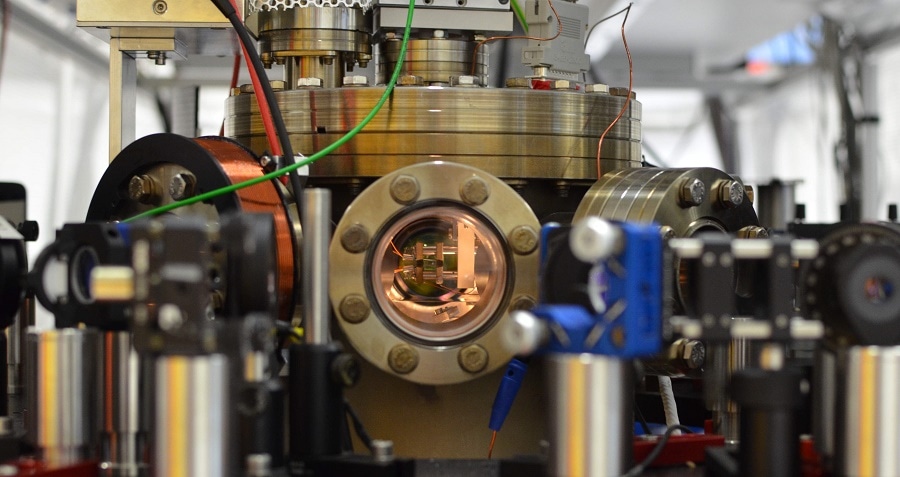Apr 19 2016
Researchers from the QUANTUM work group at the Institute of Physics of Johannes Gutenberg University Mainz (JGU) and the theoretical physicists of Friedrich-Alexander-Universität Erlangen-Nürnberg (FAU) have developed a heat engine that operates using a single atom. Their findings have been published in the latest edition of the journal Science.
 View of the vacuum chamber containing the atom trap (center) photo/©: AG QUANTUM
View of the vacuum chamber containing the atom trap (center) photo/©: AG QUANTUM
Ever since the Industrial Revolution, heat engines have played an important role in shaping society. Just like motor vehicle engines, heat engines convert thermal energy into mechanical force, and modern life would be impossible without them. There is also progress in miniaturization, resulting in even smaller devices.
A research team led by Professor Kilian Singer, head of the project at Mainz University and a current Professor at the University of Kassel, used a Paul trap to obtain a single electrically charged calcium atom. A laser beam is used to cool the atom, and electrically-generated noise heats the atom. This results in the atom being subjected to a thermodynamic cycle. The particle goes back and forth inside the trap, resembling a typical engine’s stroke. The atom stores the energy and acts in a manner similar to an engine.
The engine’s thermodynamic behavior was determined by a number of extensive tests executed by the researchers. The researchers explain that their newly developed single particle engine is capable of generating power of 10-22 watts, and works at 0.3 percent efficiency. The single atom engine’s output will be equal to that of a car engine if the power of the engine is scaled up from the small mass of a single atom.
By reversing the cycle, we could even use the device as a single atom refrigerator and employ it to cool nano systems coupled to it
Johannes Roßnagel, First Author
The main objective of this work is that the development of this specific kind of nano-engine helps understanding thermodynamics at the single-particle level, which is a popular topic in current research. Future plans will focus on reducing the engine’s operating temperature in order to examine thermodynamic quantum effects. In theory, it is believed that a heat engine’s power can be increased by connecting it to a quantum heat bath. This results in a wide range of possibilities that help crossing the conventionally accepted boundaries of classical thermodynamics and develop different types of engines.
The project is part of the "Single ion heat engine" project financially supported by a research grant of the German Research Foundation and obtained further funding within the "Atomic nano assembler" project funded by the Volkswagen Foundation.
Source: http://www.uni-mainz.de/